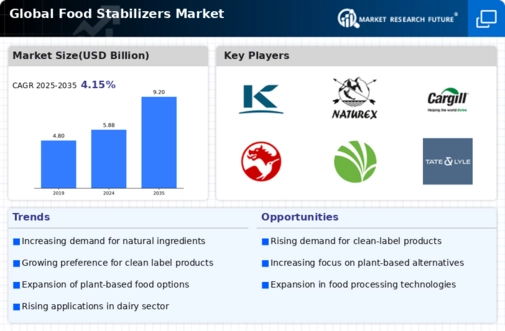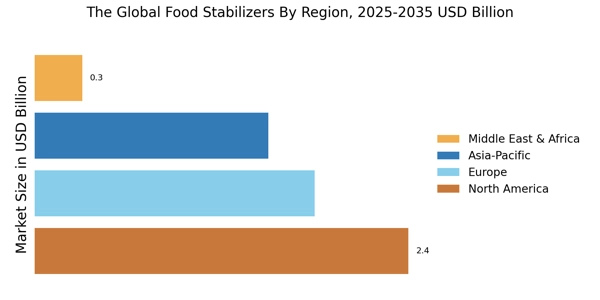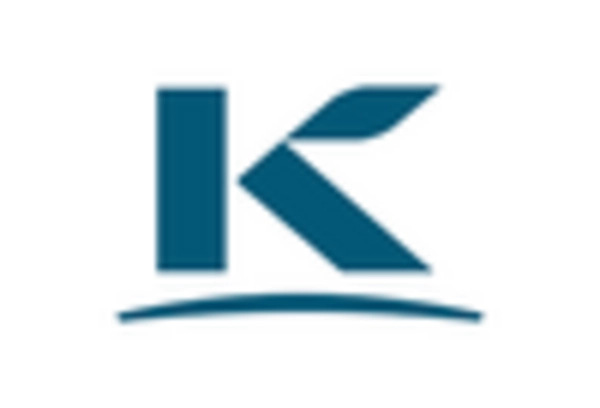Health and Wellness Trends
The growing awareness of health and wellness among consumers is influencing the food industry, leading to an increased demand for stabilizers that support healthier formulations. Consumers are increasingly seeking products that are low in sugar, fat, and artificial additives. This shift is prompting manufacturers to reformulate their products, incorporating natural stabilizers that align with health trends. The Global Food Stabilizers Industry is responding to this demand by innovating and developing stabilizers that not only enhance product stability but also contribute to health benefits. As a result, the market is likely to see a rise in the adoption of stabilizers that cater to health-conscious consumers.
Rising Demand for Processed Foods
The increasing consumer preference for convenience foods is driving the demand for food stabilizers. As lifestyles become busier, the need for ready-to-eat and processed food products rises. This trend is reflected in the food industry, where the market for processed foods is projected to grow significantly. In 2025, the processed food market is expected to reach a valuation of over 3 trillion USD, indicating a robust growth trajectory. Food stabilizers play a crucial role in enhancing the texture, shelf life, and overall quality of these products. Consequently, The Global Food Stabilizers Industry is likely to benefit from this rising demand, as manufacturers seek to improve product stability and consumer satisfaction.
Regulatory Support for Food Safety
Regulatory bodies worldwide are placing greater emphasis on food safety and quality standards. This regulatory environment is fostering the growth of The Global Food Stabilizers Industry, as manufacturers are required to comply with stringent safety regulations. Food stabilizers are essential in ensuring that products meet these safety standards while maintaining quality. The increasing focus on food safety is likely to drive innovation in stabilizer formulations, leading to the development of new products that meet regulatory requirements. As a result, the market is expected to experience growth as companies invest in stabilizers that enhance food safety and compliance.
Expansion of the Food and Beverage Sector
The food and beverage sector continues to expand, driven by globalization and changing consumer preferences. This expansion is creating new opportunities for The Global Food Stabilizers Industry, as food manufacturers seek to enhance product quality and consistency. The sector is projected to grow at a compound annual growth rate (CAGR) of approximately 5% over the next few years. This growth is likely to be accompanied by an increased demand for stabilizers that can improve the texture and shelf life of various food products. As manufacturers strive to meet consumer expectations for quality, the role of food stabilizers becomes increasingly vital.
Technological Innovations in Food Processing
Technological advancements in food processing are significantly impacting The Global Food Stabilizers Industry. Innovations such as high-pressure processing and advanced emulsification techniques are enabling manufacturers to create products with improved stability and texture. These technologies allow for the development of new stabilizers that can withstand various processing conditions, thereby enhancing product quality. The market is likely to see an increase in the adoption of these innovative stabilizers as manufacturers seek to differentiate their products in a competitive landscape. As technology continues to evolve, the demand for advanced food stabilizers is expected to rise, further propelling market growth.


















Leave a Comment